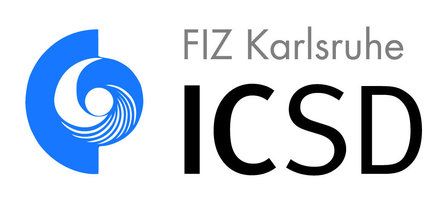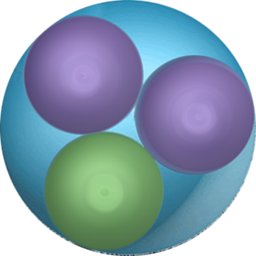
ILL
Grenoble, France
The Institut Laue-Langevin is an international research centre at the leading edge of neutron science and technology.
As the world’s flagship centre for neutron science, the ILL provides scientists with a very high flux of neutrons feeding some 40 state-of-the-art instruments, which are constantly being developed and upgraded.
As a service institute the ILL makes its facilities and expertise available to visiting scientists. Every year, some 1400 researchers from over 40 countries visit the ILL. More than 800 experiments selected by a scientific review committee are performed annually. Research focuses primarily on fundamental science in a variety of fields: condensed matter physics, chemistry, biology, nuclear physics and materials science, etc.
Whilst some are working on engine designs, fuels, plastics and household products, others are looking at biological processes at cellular and molecular level. Still others may be elucidating the physics that could contribute to the electronic devices of the future. ILL can specially tailor its neutron beams to probe the fundamental processes that help to explain how our universe came into being, why it looks the way it does today and how it can sustain life.
The ILL also collaborates closely and at different levels of confidentiality with the R&D departments of industrial enterprises.
All the scientists at the ILL - chemists, physicists, biologists, crystallographers, specialists in magnetism and nuclear physics - are also experts in neutron research and technology and their combined know-how is made available to the scientific community.
ILL is funded and managed by France, Germany and the United Kingdom, in partnership with 10 other countries.

Atomic Simulation Environment (ASE)
The Atomic Simulation Environment (ASE) is a set of tools and Python modules for setting up, manipulating, running, visualizing and analyzing atomistic simulations.
AUTOPROC
autoPROC is a set of tools and programs to automate the whole range of steps involved in data processing: analysis of collections of images and image headers, indexing of diffraction images, determination of accurate cell parameters, integration of a...

COD (Crystallographic Open Database)
Open-access collection of crystal structures of organic, inorganic, metal-organic compounds and minerals, excluding biopolymers. As of 2016/12/13, there are 369600 entries in the COD
Cosmos (Lamp)
Data reduction utility to treat TOF reflectivity data. It is distributed with LAMP, but it was developed originally as a standalone IDL application and it can still be compiled and used without LAMP.
DL_POLY
DL_POLY is a general purpose classical molecular dynamics (MD) simulation software. It is a package of subroutines, programs and data files, designed to facilitate molecular dynamics simulations of macromolecules, polymers, ionic systems and solutio...
Grasp
"GRASansP" is a MatlabTM script application designed for the graphical inspection, analysis and reduction of multi-detector data produced by the Small-Angle Neutron Scattering (SANS) instruments of the Institut Laue-Langevin (ILL). GRASansP deals wi...

ICSD
Inorganic Crystal Structure Database, containing about 185,000 peer-reviewed data entries of inorganic and related structures, including their atomic coordinates dating back to 1913. It is produced cooperatively by FIZ Karlsruhe and the National Inst...

iFit
The iFit library (pronounce [eye-fit]) is a set of methods to load, analyse, plot, fit and optimize models, and export results. iFit is based on Matlab, but can also be launched without Matlab license (stand-alone version).Matlab It does not currentl...

LAMP
LAMP (Large Array Manipulation Program) is designed for the treatment of data obtained from neutron scattering experiments at the Institut Laue-Langevin. However, LAMP is now a more general purpose application which can be seen as a GUI-laboratory fo...
MagDraw
Magnetic Editor Cell Constructor

MANTID
The Mantid project provides a framework that supports high-performance computing and visualisation of materials science data. Mantid has been created to manipulate and analyse neutron scattering and muon spectroscopy data, but could be applied to ma...

Materials Studio
Materials Studio is a modeling and simulation environment designed to allow to predict and understand the relationships of a material’s atomic and molecular structure with its properties and behavior. With it one can construct, manipulate and view m...

McStas
A neutron ray-trace simulation package. McStas is a general tool for simulating neutron scattering instruments and experiments.

McXtrace
Monte Carlo Xray Tracing. Allows simulation of X-ray beam lines, as well as sample simulations in so-called virtual experiments.

MDANSE
MDANSE (Molecular Dynamics Analysis for Neutron Scattering Experiments) is a python application designed for computing properties that can be directly compared with neutron scattering experiments such as the coherent and incoherent intermediate scatt...
NAMD
NAMD is a parallel molecular dynamics code designed for high-performance simulations of large biomolecular systems.
nexdatas
Historically it is the job of the Control Client (CC) to write the data recorded during the experiment (this is true at least for low rate data-sources). However, with the appearance of complex data formats like Nexus the IO code becomes more complex...

NSXTool
NSXTool is an application for reducing neutron single crystal data. It provides algorithms for indexing, refining UB matrix and instrument parameters, integrating Bragg peaks for future analyses using software such as FullProf or ShelX. It is mad...
Phonon
PHONON is a code to calculate lattice dynamics, mainly using input force constants from ab initio (DFT) codes like VASP. There are many kinds of output including spectroscopic scattering functions.
SASfit
SASfit has been written for analyzing and plotting small angle scattering data. It can calculate integral structural parameters like radius of gyration, scattering invariant, Porod constant. Furthermore it can fit size distributions together with sev...
SasView
SasView is a Small Angle Scattering (SAS) analysis package for the analysis of 1D and 2D scattering data directly in inverse space. The focus was originally on neutron data (SANS) but has been used for X-ray’s as well and includes a tool for determin...

VASP
VASP is an ab initio simulation package based on DFT. It is used for atomic scale materials modelling, e.g. electronic structure calculations and quantum-mechanical molecular dynamics from first principles. VASP computes an approximate solution to...
| Username | Location | About |
|---|---|---|
| Jamie Hall | Grenoble, France | Software developer at ILL. |
| Miguel Angel Gonzalez | Grenoble (France) | Computing for Science |

